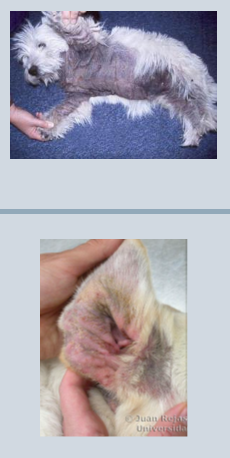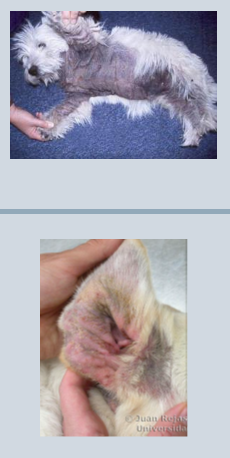Cutaneous Cytology - Touch Preparation/Impression Smears
1/14
There's no tags or description
Looks like no tags are added yet.
Name | Mastery | Learn | Test | Matching | Spaced |
|---|
No study sessions yet.
15 Terms
Cutaneous Cytology
A form of exfoliative cytology useful to sample crusted or ulcerated skin lesions
Cutaneous Cytology - gaining a sample
Crusts should be removed, and the area of interest blotted with a sterile swab
The area can be moistened with a sterile cotton bud soaked in 0.9% saline (from a drip bag) or squeezed to encourage natural exudate formation
A clean microscope slide is then firmly pressed onto the lesion and sample obtained
Touch Preparation/Impression Smears
Samples can be too thick to analyse
The method of collection can result in crushing and damage of cells
Only allow superficial sampling of external cells, so minimally diagnostic
Cutaneous cytology - Taking a sample
Insert a 25-27g needle into a pustule, parallel to the skin to avoid involvement of deeper cells
Take an impression of the ruptured pustule material using a glass slide
Cutaneous cytology - When should I do it?
When a bacterial or yeast infection is suspected (pustules, papules, scales, ulcers, crusts)
Nodules or tumours
Otitis externa
Cutaneous cytology - What might I find?
Cocci and rod-shaped bacteria
Inflammatory cells, eosinophils, macrophages
Malassezia
Neoplastic cells
Swabbing - Moistening dry areas, or the swab with sterile saline can ..
Increase harvest and reduce cell damage
Swabbing - Sterile cotton tipped swabs are used to collect cytology from ..
Skin
Ears
Mucous membrane surfaces
Swabbing - Swabs are rolled over the area of interest to ..
Gently collect cells for examination
Slide evaluation - Air dried samples
Can be stained with ‘Diff Quick’ technique and examined under oil immersion
Slide evaluation - Tape samples
Can be adhered (sticky side down) to the slide and will act as a cover slip, stained and then examined under oil immersion
Slide evaluation - What are you looking for?
Bacteria
Fungi
Yeasts
Inflammatory cells

Malassezia Pachydermatis
The most common yeast infection which can be both commensal and pathogenic
Very low risk Zoonosis documented in immuno-compromised humans

Malassezia Pachydermatis - Commonly occurs in ..
Atopic animals with immuno-compromise, affecting the skin and ear canals
Malassezia Pachydermatis - Presentation
Present in low numbers on normal skin, infection is indicated by increased numbers on sample